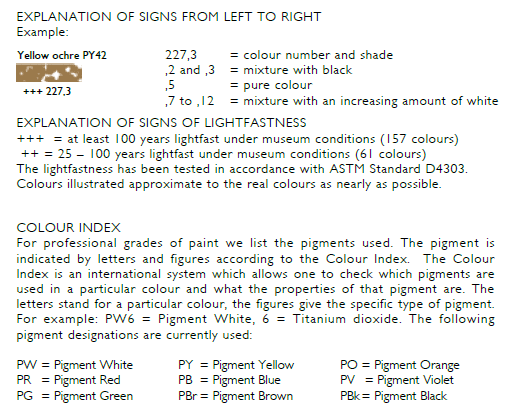Soft Pastels

 Rembrandt soft pastels owe their quality to the close collaboration with professional artists, traditional expertise and more than a century of experience. Each colour is made according to a unique formula and the necessary raw materials go through very strict control for each new batch. Rembrandt pastel have for many years been the most commonly used pastels in the world.
Rembrandt soft pastels owe their quality to the close collaboration with professional artists, traditional expertise and more than a century of experience. Each colour is made according to a unique formula and the necessary raw materials go through very strict control for each new batch. Rembrandt pastel have for many years been the most commonly used pastels in the world.
Rembrandt soft pastels are available in a wide selection of sets, luxury boxes and exclusive wooden boxes. In addition to the sets and boxes with a general assortment of pastels there are also ranges with selected colours more suited to either portraiture or landscapes, and also ranges of half pastels. All sets come with information, including tips on working with your pastels. In order to protect each of the fragile pastels, each stick is placed in a special foam base.
You can find a full list of the Rembrandt sets that we stock by clicking here.
Excellent colour release
Intense and pure colours
Good to highest degree of lightfastness
Very high colouring power due to high concentration of pigment
Free of pigments based on the metals lead, cadmium and cobalt.
The complete range consists of 218 colours
Pastel Composition
The composition of soft pastels is such that the colour on the ground approaches that of pure pigment as much as possible. This is achieved through a combination of pigment, a minimal amount of binder and the purest and softest types of kaolin, also referred to as pipe clay or china clay. The balanced proportion of these ingredients results in quick and efficient colour transfer and a velvety look.
The Right Softness
The softness has been chosen in such a way that the pastels easily transfer the colour while at the same time not fall apart or turn to powder.
Tinting strength, colour purity and lightfastness

The Rembrandt pastels owe their very high tinting strength and colour purity to a well-chosen selection of pigments and their concentration. Besides, the pigments determine the lightfastness. Only through a strict selection of the pigments use can the best combination of these properties be achieved.
No Harmful Pigments
The range is free of pigments based on heavy-metals such as cadmium, lead and cobalt.
Colour Identification and Labelling
The range consists of 218 colours of a balanced selection across the entire colour range. With the pastel painting technique the colours are mixed on the artwork itself. If too many layers are placed on top of one another the grounds can become saturated and new layers will not be able to adhere. One can therefore not apply layer upon layer. For this reason the range has many intermediate shades with black and white so that dark and light gradations of colour do not have to be mixed. The Rembrandt range consists of 44 pure colours (full tones), 56 colours mixed with black and 118 colours mixed with white. The colour number indicates whether a colour has been diluted. Each colour has its own number. With pure colours this number is followed by the code, 5. In the case of pure yellow ochre the label says 227,5. The intermediate shade with black is indicated by 227,2 and 227,3. The intermediate shades with an increasing amount of white are labelled with a series of increasing numbers. In this case: 227,7 , 227,9 and 227,10. Some colours also have the gradations ,8 and ,12. The extra soft white pastel with the name White Super-soft (colour number 101,5) is for applying light accents in the final layers.

Using your pastels
Ground and Adhesion
When using pastels the dry, coloured powder of the pastel is transferred onto the ground. In theory every ground an be used, proving it has sufficient surface structure. Special pastel paper is usually used. Contrary to paint, pastel does not bind to the ground through the use of a binder. The pastel powder remains within the fibre of the paper.
Auxiliaries and Accessories
When working with Rembrandt Pastels a number of accessories are essential, such as:
Pastel Fixative: Improves the adhesion of the pastel particles on the ground. It is colourless, quick drying and does not turn yellow. It is best to apply the fixative with a spray can at a distance of approximately 40cm. Apply sparingly as if too much fixative is applied the colours can become considerably darker. A safe way is to lightly fix each layer and then apply the next layer once the fixative has dried.
Kneadable Eraser: A kneadable eraser can easily absorb pastel, graphite and charcoal particles. They can be reused over and over again until the eraser is saturated.










